Costa Rica
General
Independent democratic republic, main language Spanish. A country of 51,000 square kilometres, it is bordered by Nicaragua to the north, Panama to the south, the Pacific ocean to the west, and the Caribbean sea to the east. Population of 4.5 million, of whom about a quarter live in the capital San Jose.
Costa Rica abolished its army in 1949 to concentrate on education, health and the environment. It has a better health system than the USA, and was identified by the New economics Foundation as the greenest country in the world.
Costa Rica is near the equator, so its climate is tropical: but there are many microclimates so you need to check each area you plan to visit. The dry season (summer) runs from December to April, and the wet season (winter) from May to November, when it can rain a lot.
Currency: Costa Rican colon. The US dollar is commonly used.
558CRC = US$ 1.00. 606CRC = €1. 703 CRC = £1.
Flight time London to San Jose: 11 hrs 20 min.
Time in San Jose: UTC - 06.00
Entry requirements: valid passport, return ticket.
Departure tax: US $29, at the airport (check whether this is included in the airfare).
Visas? Not for US or EU, but needed for certain countries.
See http://www.visitcostarica.com
(written May 2017)
On the right is a very helpful map from https://costa-rica-guide.com/travel/weather/weather-map-rainfall/, which shows the complexity of microclimates in the country. A lot of rainfall doesn't mean it's the wrong time to visit - some of the cloud forest areas are fascinating, for example - but you need to be aware of where you're going before you go there.
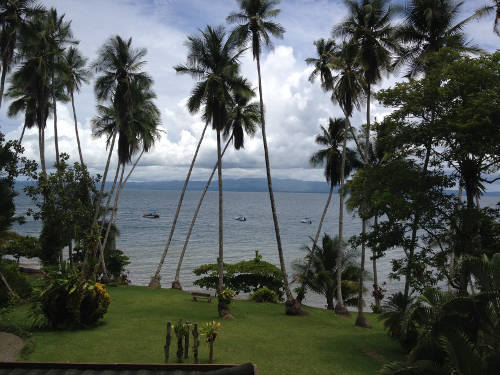
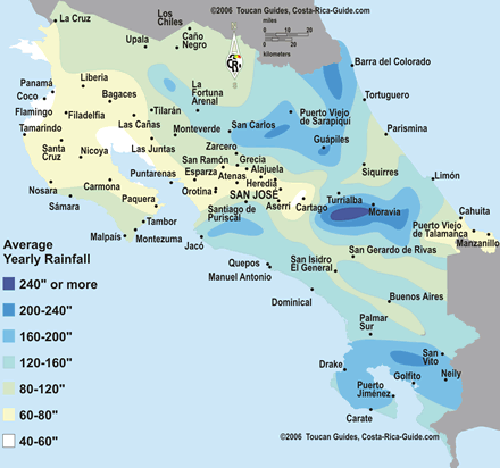
Climate charts (Puerto Limon and Guanacaste)
There are a lot of different climate areas in Costa Rica - you need to check your planned destination. This is a good summary: https://www.govisitcostarica.com/travelInfo/climate.asp.
Lowlands - The North, Guanacaste, the Pacific and Caribbean coasts and the Osa peninsula can have temperatures between 15 and 45 ºC.
Highlands - inland and higher up, temperatures from 0 to 30ºC.
We've summarised two places, on the Caribbean and the Pacific.
Puerto Limon is on the Caribbean side.Check http://www.weatherbase.com/ , and http://www.holiday-weather.com/puerto_limon/averages/.
Guanacaste is on the Pacific. Take a look at http://www.guanacastecostarica.com/climate.html and https://www.seatemperature.org.
Sea temperature is 23 to 30ºC - that's warm. http://seatemperature.net/country/costa-rica
Average temperature in capital city San Jose is 25ºC.
The wet season runs from June to November, dry season from December to May. Hurricane season June to November.
UK Foreign office warns swimmers to be cautious in the sea as there can be strong currents, especially on east coast.
The wet season is really wet in some areas - look at the rainfall figures. But you can find drier places. Parts of the north west are hot and dry. September and October are supposed to be good for whale watching, and for visiting the Caribbean coast, but we wouldn't go there for snorkelling in the wet months.
General impressions
Taxi from the airport to San Jose is supposed to take 30 mins, but took 1 hr 30 because a bridge was down. The skies had opened and we got an idea of what the rainy season would be like - hot and humid. We learned there are 20 microclimates in this narrow country nestling between the Caribbean and the Pacific, with its four mountain ranges and huge national parks.
Costa Rica abandoned its army in 1949, and concentrated its resources on education, health, and protecting the environment. It's the first country we've been to that bans smoking in all public places, including parks. Smokers have to find a hidey-hole where their habit doesn't affect anyone else: and this country has declared 25% of its area as national parks. It's a friendly, charming, beautiful place: but what's the snorkelling like?
One thing that isn't publicised much is that a number of tourists die in the sea each year. The beaches are large and picturesque, but are not patrolled all that often by lifeguards. A lot of deaths, apparently, are caused by 'holiday brain' - the belief that, because everything is so pretty and friendly, you don't need to take normal precautions. Well, you do - you need to be as careful here as anywhere else. In particular you should watch out for 'rip currents' that can take you out to sea. They won't necessarily kill you, but if you panic, things could get sticky. Check out Rip Currents in the Safety section.
Guanacaste - North West
We went by car to Playa Hermosa (marked on the map), in Guanacaste in the North West. Journey from San Jose takes 4.5 hours, along the N27, then the Pan-American Highway, which goes from Alaska to Argentina, but is still a narrow two-lane road in places, with howler monkeys in the trees and vultures circling overhead.
Playa Hermosa is a sandy bay with rocks at either end. At first sight the sea is uninspiring, a grey, dark mass with plenty of silt in it. But the snorkelling is better than it looks.
The Bosque De Mar is a small family hotel on the beach (Bahia Hermosa). We were told the beach is safe, but there is a pull from the tide. Locals told us that visibility was better at high tide, and also we knew that the pull would be smaller at the turn of the tide, so we checked the tide times on magicseaweed.com, and aimed at peak high and low tides.
The beach in Playa Hermosa is sandy but there are a couple of special features. The main one is the pelicans fishing at the southern end of the beach - we watched them repeatedly diving, and knew there were a lot of fish around. Swimming off the beach was a little dull - sand snorkelling in poor visibility - but as we approached the rocks, the sea burst into life, with hundreds of small needlefish swimming past, and thousands of other small fish - this looks like a nursery area, which is why the pelicans fish here. They continued unperturbed as we swam along, diving over our shoulders into the teeming fish.
Snorkelling with pelicans is a breath-takingly wonderful experience.
As we got closer to the rocks, the fish increased in size. A large flatfish erupted in the sand in front of us, disguising its whereabouts in a dense cloud of sand. We saw two mammoth needle-fish, more than a metre long - the longest needlefish we have seen to date. Lots of pufferfish, including the bright yellow guineafowl pufferfish.
As a snorkelling experience, it's more like swimming in the Mediterranean - grey sea, silvery fish, not a lot of colour, no coral - but the sheer exuberance of the fish we swam through was exhilarating. One minute, nothing - the next, you're surrounded by fish everywhere, swimming left, right, up, down. It was an explosion of fish life, in our first swim. We're sure there will be a lot more to see.

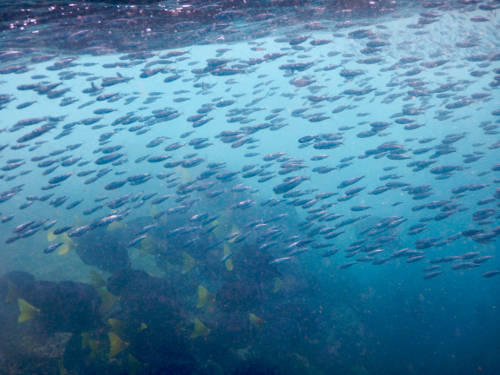

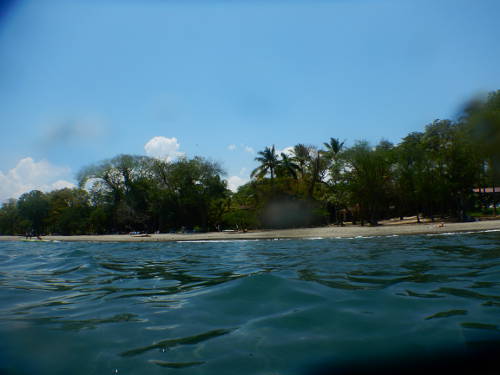
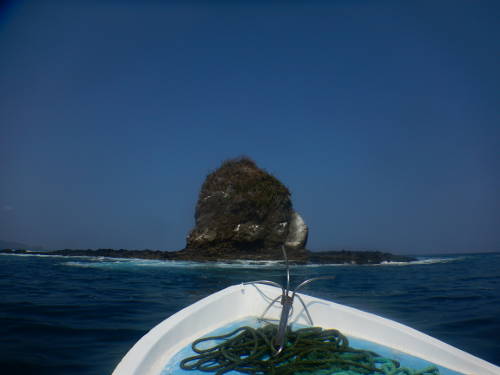
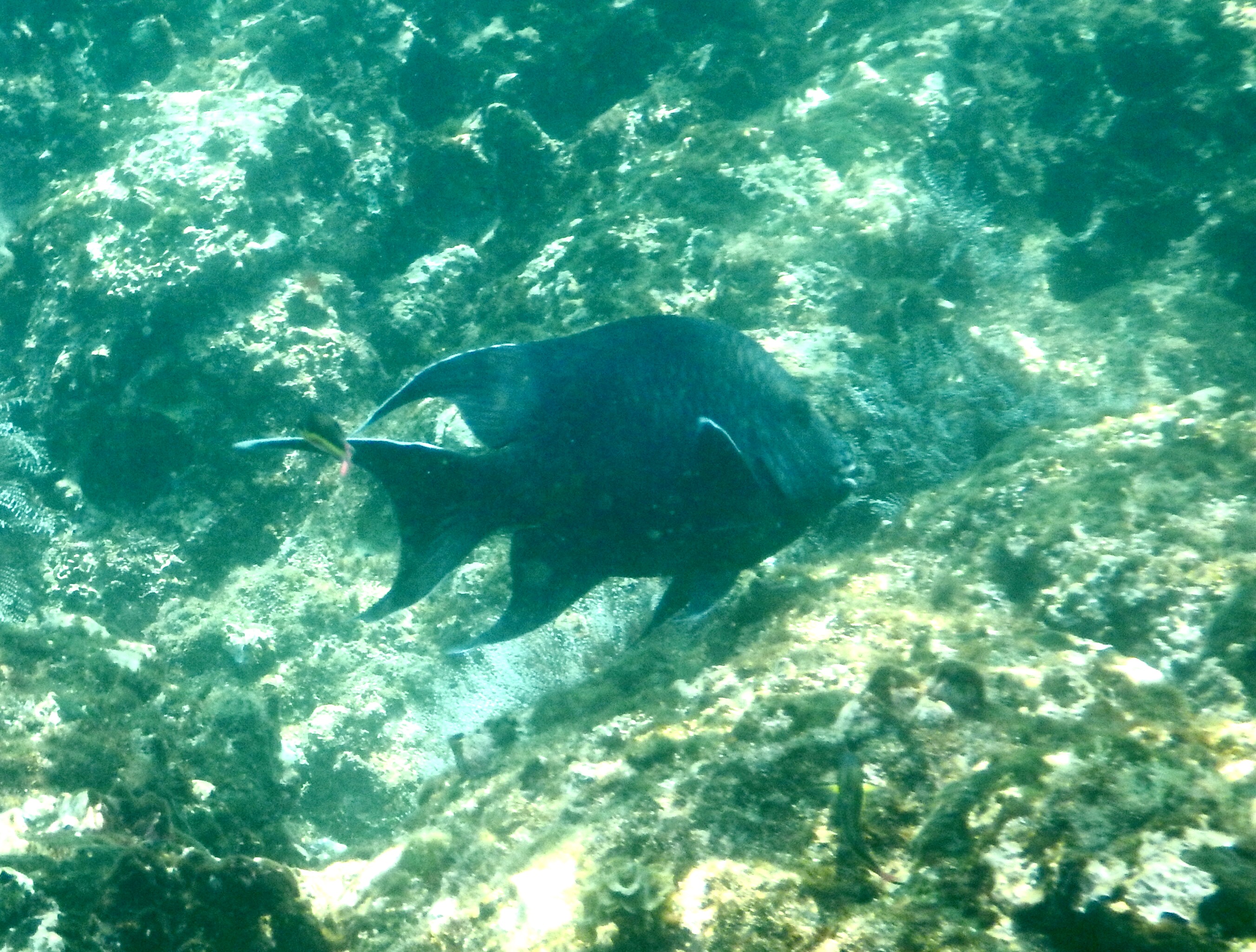


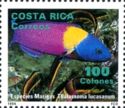
Boat trip
We decide to try a local diving boat crew - Albany Vallejos, Sport Fishing and Snorkelling, who operate off the beach in Bahia Hermosa. The local hotel quoted US $85 per person for a four-person snorkel trip, and these people wanted US $40 pp, so we went with them.
The boat arrived on time, with a skipper and an assistant, though not the guy who had promised to come with us. We started by snorkelling on the beach at the expensive Four Seasons Resort, off-beach snorkelling in warm water that unfortunately had a pink algal bloom and was difficult to see in. There were some large fish around, but it wasn't a very pleasant experience, and we gave up after thirty minutes.
Next we went to Monkey Head Rock, the single rock that juts out at the northern end of the bay: this looked very promising, but the skipper decided the currents were too strong so we left. (10 points to the skipper, by the way - it's quite rare to see decisions made like this for the sake of safety).
So we went to the Three Islands and dropped in there. This was a stunning location, full of large parrotfish, pipefish, Rock Beauty, blacknosed butterflyfish, king angelfish, lots of giant damselfish (blue, with more fins than seem reasonable), and a number that we couldn't identify.
The sea was full and it was difficult to tear ourselves away. We got back to base after two-and-a-half hours.
Verdict? Good value for money, competent safe crew - but still not the kind of snorkelling that blows you away. Maybe we just came out on the wrong day.
We found other boat tours - Fernando, tel 8488 3142, who charges $25 per person, and BA Divers Costa Rica, a more professional organisation who seemed to be mainly scuba-based, who charge $58 per person. Tel (506) 2672 0032.
We asked about the red algae along the Four Seasons beach, and they said it was known locally as the Red Tide.
What kind of fish are around?
We went out at dawn to see what's going on. The sea is calm and flat, the wind hasn't picked up yet, this is a good time to be out. We see a lot of fish, including some very large pipefish and a big ray that steals away as we approach. This is the first time we have seen a ray from beach snorkelling. Definitely a special day. Tried in the afternoon: windy, bad visibility, didn't stay in long. Dawn seems the best time around here.
Out just after dawn, saw another stingray, smaller this time, a young giant hawkfish, king angelfish, a load of puffers. Sat among a group of pelicans as they fished, spearing the water with their sharp bills, or taking off with three bunnyhops and a jump to circle where we were, fold back their wings, and dive into the water before coming up with a small fish. Magical...
Next day. Identified two fish that had been puzzling us: a silvery obloid vertical fish with a forked rain, the bluntnosed pompano - and the Tinkerbell fish that had been acting as pilots are juvenile golden trevally.
Also saw Bodianus Diplotaenia, the Mexican Hogfish (like a wrasse, black lines on torpedo body, yellow tail and dorsal fin), the Cortez Rainbow wrasse or thalassoma lucasanum (which is on the 100 colones Costa Rican stamp), the Cortez angelfish (black angelfish with crisscross cummerbund).
Final day. Glimpsed a ray, saw a school of about 300 diamond-scale mullet. Still a lot of pufferfish and porcupine fish around.
Final verdict - lots of fish, but problems with visibility. It might be the time of year. Generally better in the early morning.
Osa peninsula - South West
We moved to Playa Cattivo, a splendid eight-room hotel in the Golfo Dulce (marked in the map on the left), and spent some time snorkelling the murky waters. The bay in front of the hotel has brown sand and rocks, but visibility is murky. Tried in front of the hotel, along the beach from the pier, dawn dusk and noon. Always murky.
We were in Golfito, by the Osa peninsula, described by Wikitravel as "a wondrous, magical, and untouched place for nature-lovers and adventurers", and by National Geographic as "one of the most biologically intense places on the planet." It is home to half of all the known species in Costa Rica, and we were surrounded by animals that we had never seen before.
On Day 17, went out on a snorkel trip to the point south of the lodge. Saw brain coral, table coral and fan coral. Visibility still a little murky - when the sea gets churned up it kicks up the mud from the bottom. It got better, though, we saw sergeant majors, butterflyfish, Moorish idols (first time on this trip) a huge moray eel, Cortez wrasse, Cortez angelfish, razor surgeon fish and a stingray. Also saw a large fish with big back fins - an ocean triggerfish. Previously we saw an eagle ray jumping out of the water.
Verdict - a magical place, worth the trip for the wildlife alone. But snorkelling? Still problems with visibility.
The unbelievable beauty of Costa Rica
It is difficult to imagine how different, and wonderful, this country is - from the unusual step of abolishing their army, to their focus on education and environmental protection, to the stupendous variety of wildlife. And we're not just talking normal wildlife - we had never heard of many of these things before, let alone seen them.
Our first trip in the Golfo Dulce was to the mangrove swamps north of the hotel, looking for crocodiles. Kayaked through the mangroves, learned a lot about bromeliads (green plants halfway up trees, seeds ingested by bats who then poop on the tree trunks, which is why they grow there).
A walk to the local farm threw up motorways across the forest floor - leaf-cutter ants, who harvest leaves and take them back to their nests, where they are used to grow a fungus (which they use as food). When a female becomes a queen and leaves the nest, she takes a piece of the fungus with her in a pocket and transplants it to a new place. Worker ants deposit leaves and refuse from the forest floor there, and the new fungus takes root. Within a few years the new nest can grow to 100 feet across with eight million ant inhabitants - the second most complex social organisation in the world (after humans).
The ants don't eat the leaves - they are fungus farmers, and the leaves are used to feed their crop.. It took them 30 million years to develop the fungus into what they wanted, which they achieved 15 million years ago. The ants are specialised: there are four castes - minima, who clean the paths and sit on the leaves guarding against parasite attacks; workers, who carry the leaves; and soldiers, who protect the nest and the workers. All these are female. The fourth caste is male: they do occasionally breed males, when they want the queen to be fertilised.
We also learned about one side-effect of climate change. Crocodiles lay eggs which are temperature dependent. Below a certain temperature, the eggs produce females. At a median temperature, the sexes are 50-50. Above that temperature, male. If the thermometer climbs any higher, the eggs die. Global warming can kill an entire species.
We watched out for sloths - they need heat in order to get their bodies moving, so they climb to the top of trees to bask in the sun - where they can be seen and picked off by harpy eagles.
Toucans are aggressive eaters of smaller birds and eggs. We watched them being chased away from a nesting tree by (very small) flycatchers.
We saw agoutis, coatls, howler monkeys, vultures, loads of different birds, frogs, the odd snakes, and whole worlds of insects. It was an experience we had never encountered before.
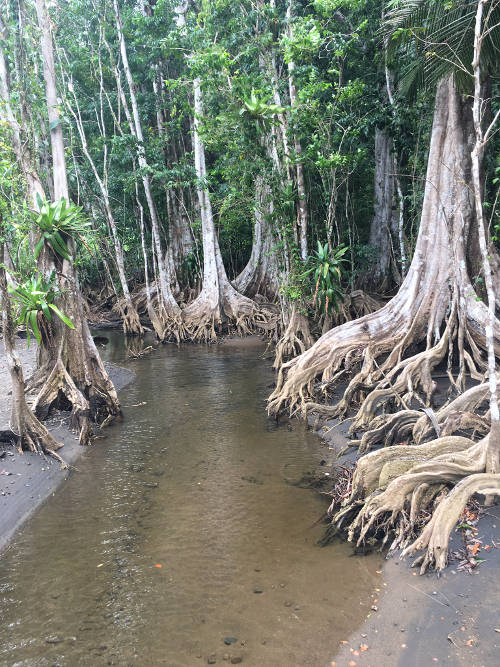
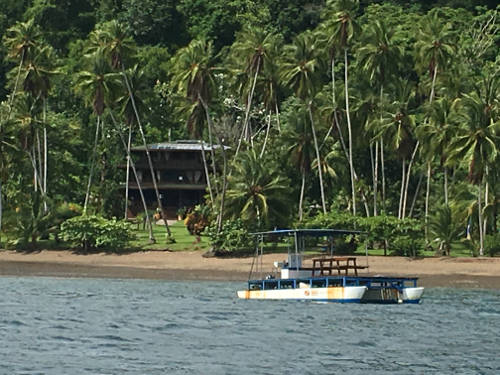
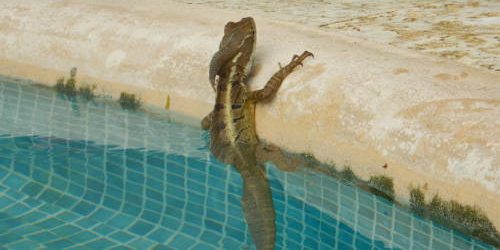
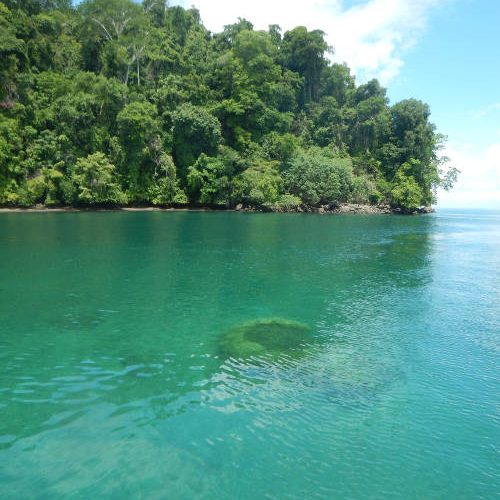
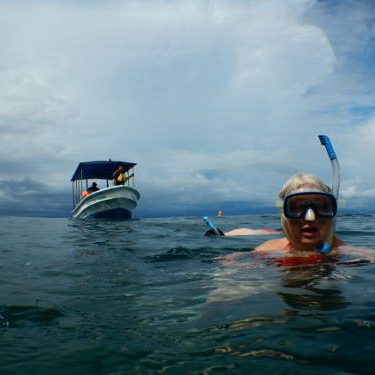
Would we go there again? The snorkelling wasn't the best we have seen - visibility too murky. But Costa Rica is truly an astonishing place. We would welcome the chance to go back and look for other snorkel sites. January to March are probably the best times for snorkelling and cost.

Usual warning: we have made every effort to make sure this information is correct and up-to-date, but you need to check it all yourself.
© Garreg Lwyd Ltd 2018
Do you have any comments, or recommendations? Send us a message! We'd love to hear from you...
